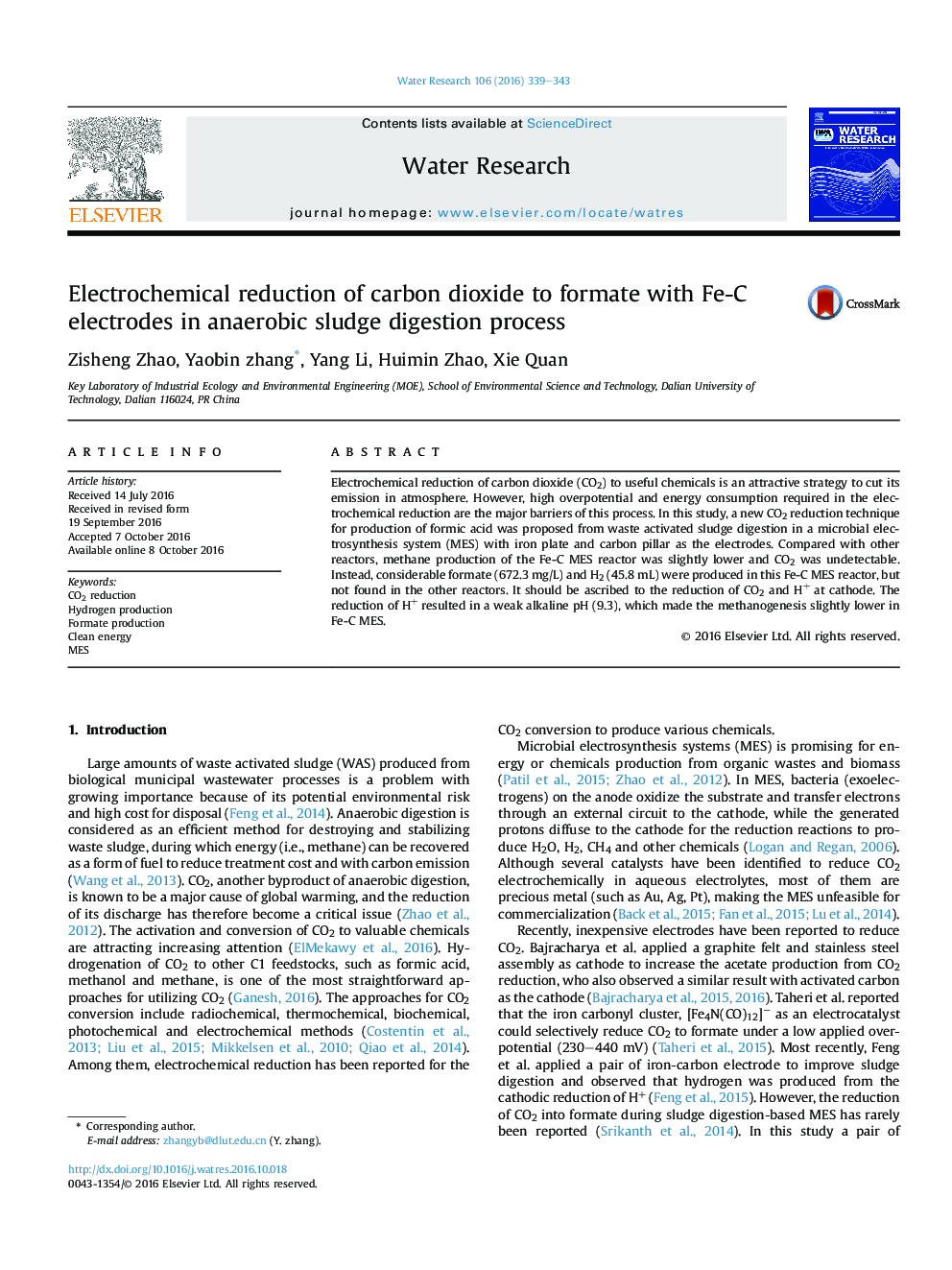| Article ID | Journal | Published Year | Pages | File Type |
|---|---|---|---|---|
| 6364229 | Water Research | 2016 | 5 Pages |
â¢Clean energy was produced from anaerobic digestion of waste activated sludge.â¢All CO2 produced during the digestion process was reduced to formate at cathode in the MEC.â¢Vast hydrogen was produced during the waste activated sludge digestion.â¢Low cost electrodes were used to reduce CO2 to formate.
Electrochemical reduction of carbon dioxide (CO2) to useful chemicals is an attractive strategy to cut its emission in atmosphere. However, high overpotential and energy consumption required in the electrochemical reduction are the major barriers of this process. In this study, a new CO2 reduction technique for production of formic acid was proposed from waste activated sludge digestion in a microbial electrosynthesis system (MES) with iron plate and carbon pillar as the electrodes. Compared with other reactors, methane production of the Fe-C MES reactor was slightly lower and CO2 was undetectable. Instead, considerable formate (672.3Â mg/L) and H2 (45.8Â mL) were produced in this Fe-C MES reactor, but not found in the other reactors. It should be ascribed to the reduction of CO2 and H+ at cathode. The reduction of H+ resulted in a weak alkaline pH (9.3), which made the methanogenesis slightly lower in Fe-C MES.
Graphical abstractDownload high-res image (195KB)Download full-size image
